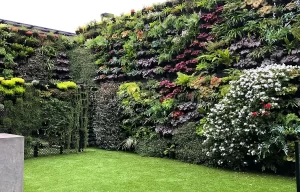
Whether you are designing a new home or renovating a current space, the right furniture interior design will make the space feel comfortable and welcoming. Having a few basic decorating ideas in mind will help you choose the perfect pieces to complement the space.
Modern-rustic
Taking cues from nature, modern-rustic furniture interior design features natural materials that provide warmth and comfort. These include wood and stone. The design is minimalistic and clean. The pieces are sturdy and durable.
The use of natural light and a sliding barn door closet creates a tranquil and relaxing environment. The color scheme for the space is likely to be neutral. This means the furniture and decor will blend in.
A great foundational color for the room is gray. It’s easy to add color to make the space feel interesting. It’s also a good idea to consider rugs, throws, and pillows.
A wooden bowl placed underneath a sleek coffee table is an interesting touch. It can act as a storage space as well. It’s also a great place to put a plant or a book.
Transitional
Originally rooted in 17th century Europe, transitional furniture and interior design is a mixture of traditional and modern styles. It’s a style that combines sleek straight lines with rounded curves. It also uses neutral colors and layers.
Transitional designs emphasize simplicity, warmth, and comfort. They are often described as elegant and sophisticated, but they are not strictly formal. They are a personal expression. The key is to combine pieces that you love, and to create a sophisticated home that you can live in.
Transitional furnishings are a blend of straight and curved lines, combined with soft and graphic fabrics. They use rich woods to add visual interest.
Contemporary
Compared to traditional furniture, contemporary style furniture is more organic and minimal in shape. It also lacks elaborate detailing. Often, it’s made from wood and fabrics, with metals like metallic light fixtures as accent pieces.
Although contemporary interior design is minimal, it can still be dramatic. For example, it might include large scale geometric features, dramatic plants, or touchable textiles. It may also incorporate industrial and natural elements to create a dynamic environment.
For example, the design world is often influenced by artists. Lily Kwong, who is a modern furniture designer, has a knack for creating living masterpieces. She’s also a big fan of botany and its versatility in constructed spaces.
Asymmetrical layout
Using asymmetrical layout in furniture interior design can help you create visual balance in your room. Asymmetrical balance is the process of balancing various visual elements to give you a more dynamic feel.
Asymmetrical balance is an art form that works by utilizing an invisible axis to create the right amount of balance between different elements. Often, these elements are arranged in an odd number to give the illusion of an equitable weight distribution.
Asymmetrical designs are usually less formal and have a more playful or informal feel. Asymmetrical layouts can also work well in rooms with strong architectural features.
Asymmetrical designs require more coordination of pieces. The best way to achieve asymmetrical balance is to repeat an element with similar shapes and colors.
Monochrome palette
Using a monochrome palette for furniture interior design is a great way to add interest to your room. The look can be chic and sophisticated. It’s also easy to incorporate into the home.
While the monochrome color scheme has a lot of advantages, it can also be a bit boring. If you want to make your space pop, add a few colors that are a little different. For example, adding a bold carpet color can add a bit of visual appeal. You can also add a touch of colour by choosing artwork and soft furnishings with a contrasting hue.
The most important thing to remember about a monochrome palette is to ensure that you are not overpowering your space. This is not to say that you should not use your favorite color. However, a limited palette will allow you to be more selective in your choices.
Pre-fabricated homes
Whether you’re planning to build a home for yourself or a loved one, pre-fabricated homes can provide a number of benefits. For starters, they’re often cheaper than conventional houses. They’re also quicker and more flexible. They can be built quickly and aren’t subject to weather delays. They also come with a backyard or balcony.
A growing number of home builders are focusing on the concept of modular homes. Many of these houses use eco-friendly materials and offer great customization options.
One of the newest additions to the prefab housing world is the innovative Foyr Neo. It’s a novel modular construction that offers home design ideas for people who are looking for a tiny house.








